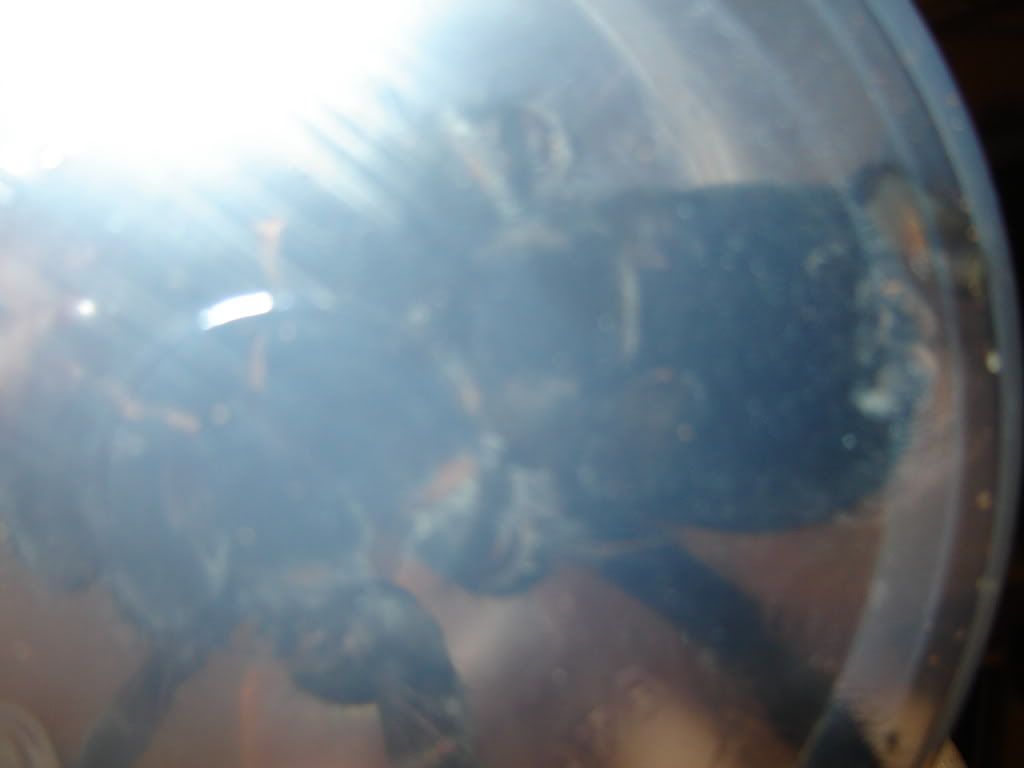- Joined
- Oct 23, 2007
- Messages
- 1,145
Instead of a topic of speculation, I've decided to share some gems I received from Peru. But before anyone asks I am not selling these. I plan to raise, observe, and hopefully breed them. This topic is for the general increase of knowledge for everyone of this species. For those who ask questions I will do my best to answer and find out more information through their behavior. I will continue to post pics and updates.
Recently Peru has been open to legal export (http://www.cites.org/eng/notif/2009/E053.pdf) and the trade has seen an increase in Peruvian tarantulas. I myself made a previous order from a collector in Iquitos. I began to chat with him about a second order and asked if he ever found tarantulas in the Ixtapa basin, and other areas he legally collects from that were found communally. I was aware that the chicken spider had been sighted all the way up to the Iquitos area. He responded yes, but he always assumed they were Pamphobeteus antinous. Ecstatic that these tarantulas were found in unprotected areas and legal to collect with the proper permit I began to plan an order.
Needless to say well over a year passed before the proper permits were acquired and the collecting trip was planned (several months of heavy rains and flooding hindered his efforts as well as government reorganizations of certain departments).
He found several burrows in the area (with many burrows containing more than 20 tarantulas), but focused on two that were found 18 feet apart. He collected 25 (as the permit indicated). 21 from one burrow (1 adult female, 1 large juvenile, and 19 slings of various sizes), and 4 from another (1 adult, 1 sub adult, and 2 juveniles of different ages). There were more in the burrow containing the large juveniles and adults, but he left them.
Finally the shipment was sent, cleared by Canadian customs and I received them... a day later than expected. Nervously I opened the box that had been delayed for a day in the city of origin. The thermal pack was cold. In horror I removed the containers. Each one was nonresponsive.
I then also recalled that much further south in the Madre de Dios Region where the Chicken Spider is also found polar winds can drop the temperatures to close to freezing for several days, and if what I had was the Chicken Spider their shocking temperatures in the box may be something they may be able to tolerate for short amounts of time.
Having received cold orders in the past, and hoping my theory of the polar winds was correct I knew I had to let them heat up slowly. So I waited a couple hours and most started to be responsive. At this point I picked off a number of fly larvae parasites on the tarantulas (the largest female had at least 10 on her). Thankfully I have predatory mites (H.miles) at my disposal.
After 3 hours all were responsive yet lethargic.
Using two large rubbermaid containers, each with a large cave, smaller hiding spots and multiple bottle caps for water sources (now with rocks unlike in the picture), I transferred the two groups to their respective homes. I prekilled a number of crickets (actually I use a technique where you remove the head/front segment from the body, but not completely so the legs still move and twitch) and fed them to them, which all the adults and subadults happily took.
Surprisingly, unlike the Pamphobeteus, who's urticating hairs gave me terrible week long reactions and made my hands feel like they were on fire, this species has little to no reaction with my skin at all.
After quarantine I have an 80 gallon for the mother and her slings, and a 6'x2x'1.5' tank I am setting up for the group of 4.
Here are pictures of them in the wild, followed by 3 pictures of them in the containers I have for them. The containers are 3'x2'x1.5' and are currently in my bug room at 80'F. The excessive leaves and moss are from my predatory mite cultivation container so as to use a large number of them to clean the tarantulas off. I also just misted the containers. I do this since the tarantulas tend to clean themselves off and remove any waste material stuck on them from the shipment, as well as get some extra hydration.
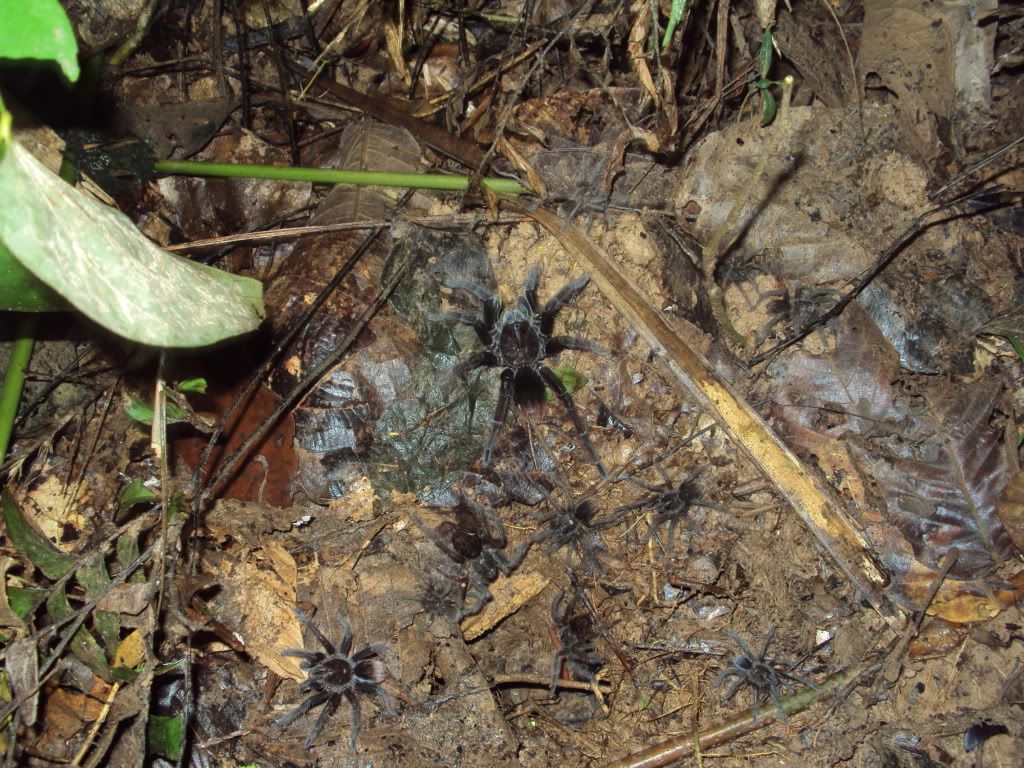
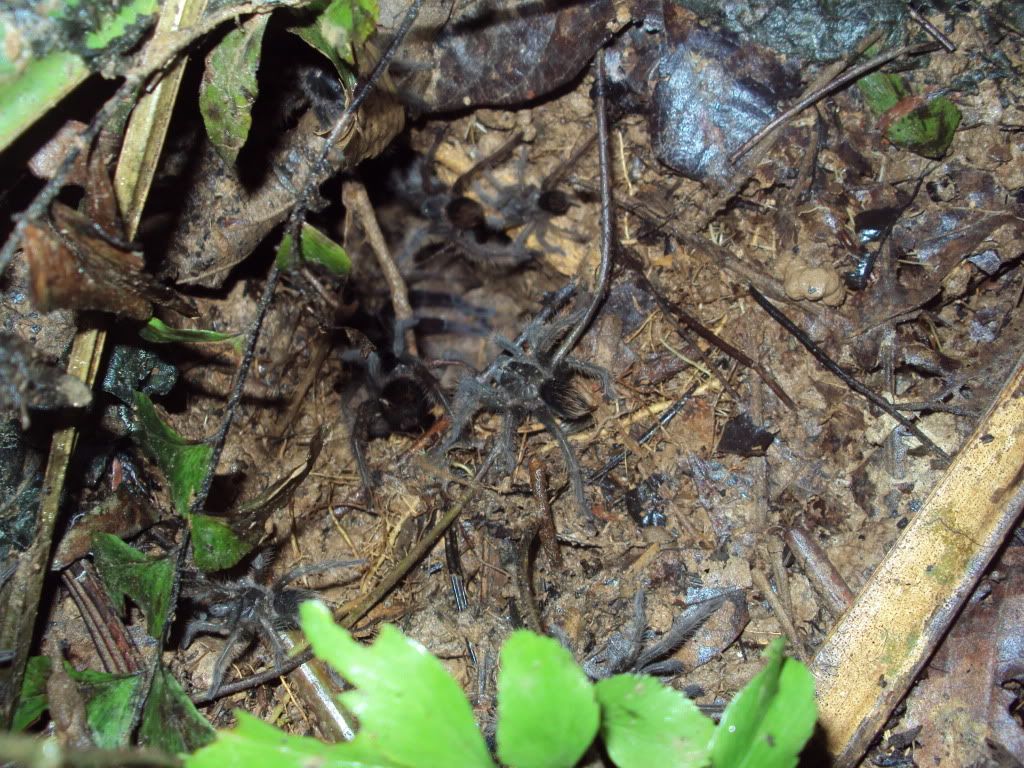
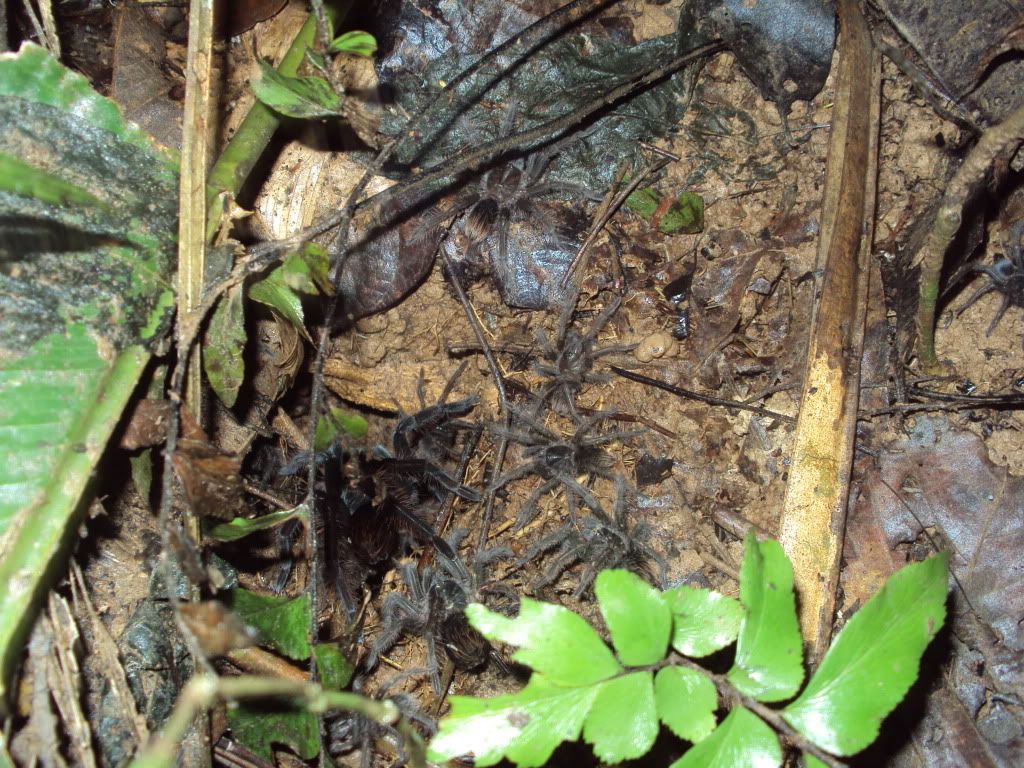
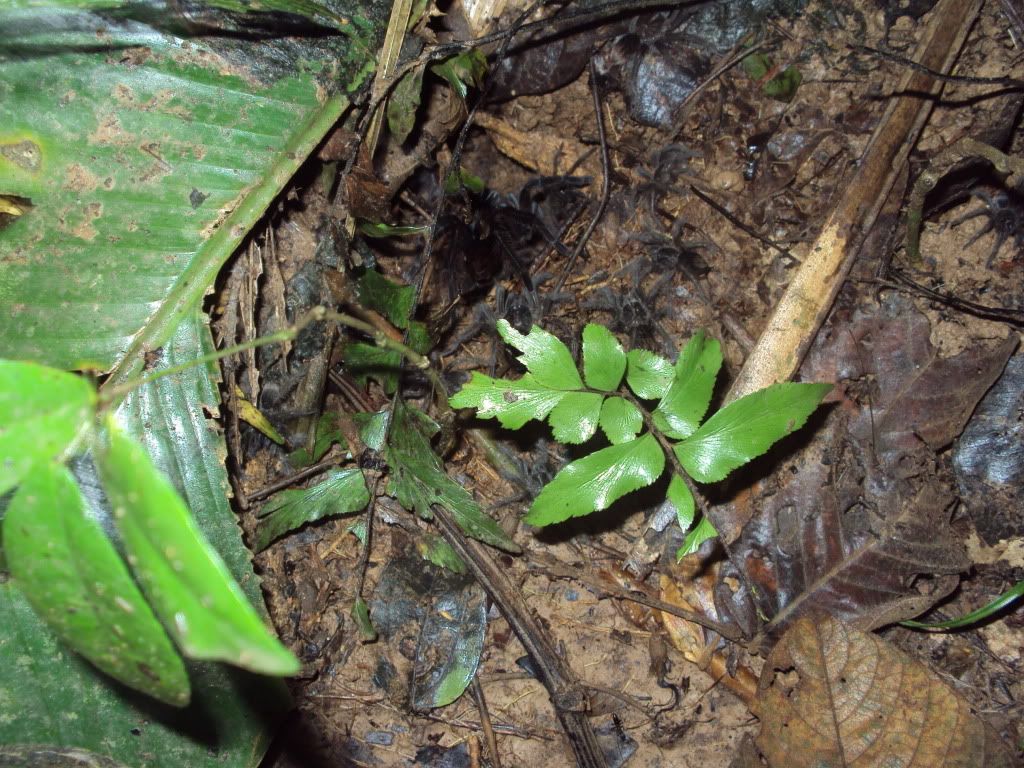
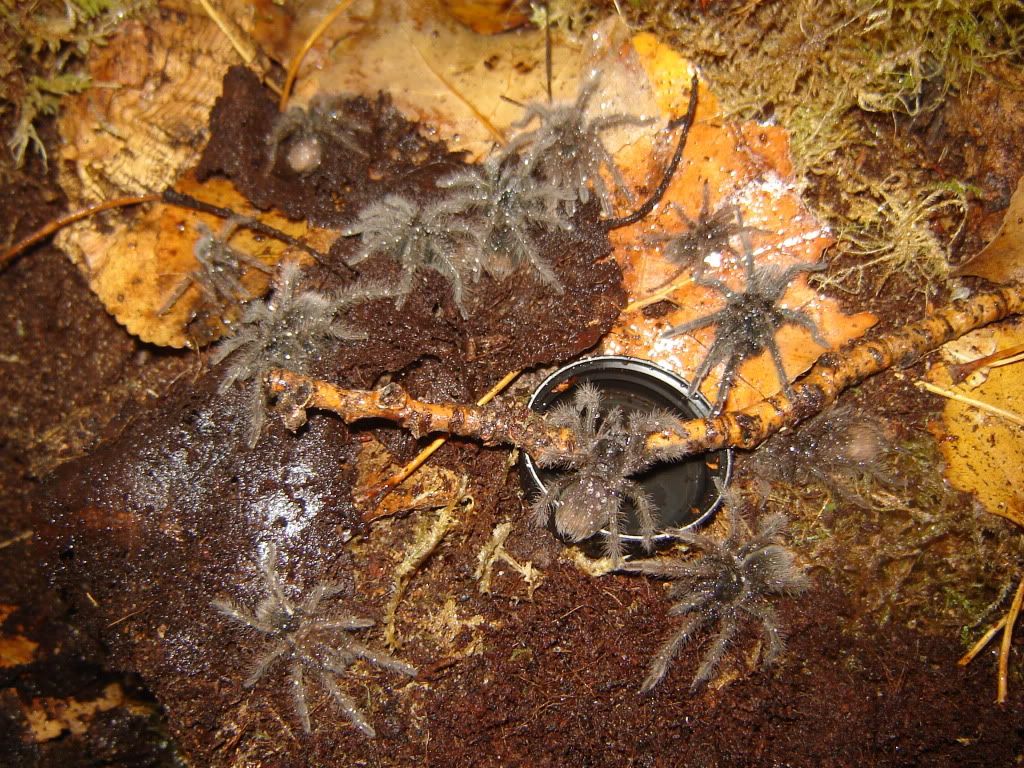
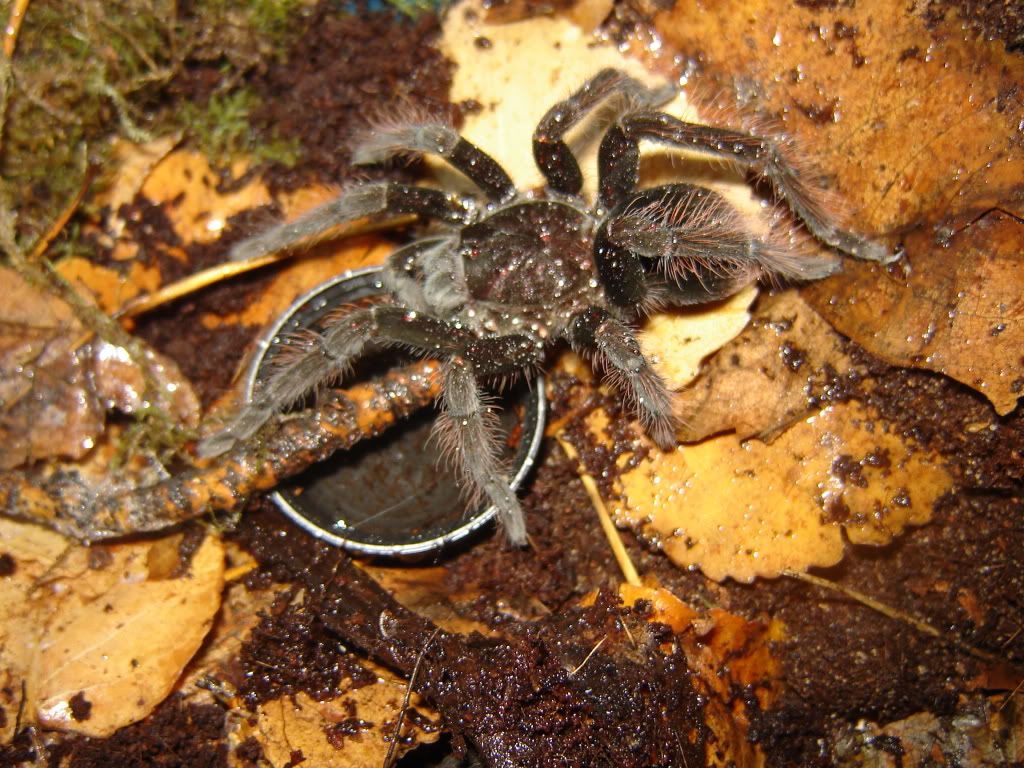
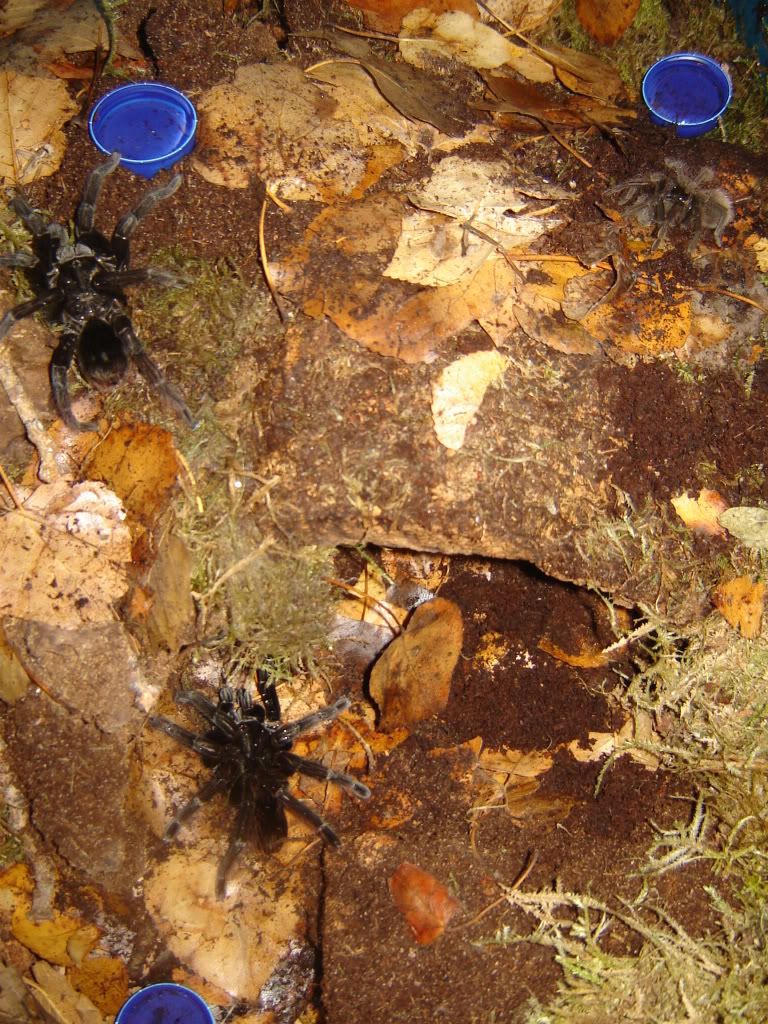
Recently Peru has been open to legal export (http://www.cites.org/eng/notif/2009/E053.pdf) and the trade has seen an increase in Peruvian tarantulas. I myself made a previous order from a collector in Iquitos. I began to chat with him about a second order and asked if he ever found tarantulas in the Ixtapa basin, and other areas he legally collects from that were found communally. I was aware that the chicken spider had been sighted all the way up to the Iquitos area. He responded yes, but he always assumed they were Pamphobeteus antinous. Ecstatic that these tarantulas were found in unprotected areas and legal to collect with the proper permit I began to plan an order.
Needless to say well over a year passed before the proper permits were acquired and the collecting trip was planned (several months of heavy rains and flooding hindered his efforts as well as government reorganizations of certain departments).
He found several burrows in the area (with many burrows containing more than 20 tarantulas), but focused on two that were found 18 feet apart. He collected 25 (as the permit indicated). 21 from one burrow (1 adult female, 1 large juvenile, and 19 slings of various sizes), and 4 from another (1 adult, 1 sub adult, and 2 juveniles of different ages). There were more in the burrow containing the large juveniles and adults, but he left them.
Finally the shipment was sent, cleared by Canadian customs and I received them... a day later than expected. Nervously I opened the box that had been delayed for a day in the city of origin. The thermal pack was cold. In horror I removed the containers. Each one was nonresponsive.
I then also recalled that much further south in the Madre de Dios Region where the Chicken Spider is also found polar winds can drop the temperatures to close to freezing for several days, and if what I had was the Chicken Spider their shocking temperatures in the box may be something they may be able to tolerate for short amounts of time.
Having received cold orders in the past, and hoping my theory of the polar winds was correct I knew I had to let them heat up slowly. So I waited a couple hours and most started to be responsive. At this point I picked off a number of fly larvae parasites on the tarantulas (the largest female had at least 10 on her). Thankfully I have predatory mites (H.miles) at my disposal.
After 3 hours all were responsive yet lethargic.
Using two large rubbermaid containers, each with a large cave, smaller hiding spots and multiple bottle caps for water sources (now with rocks unlike in the picture), I transferred the two groups to their respective homes. I prekilled a number of crickets (actually I use a technique where you remove the head/front segment from the body, but not completely so the legs still move and twitch) and fed them to them, which all the adults and subadults happily took.
Surprisingly, unlike the Pamphobeteus, who's urticating hairs gave me terrible week long reactions and made my hands feel like they were on fire, this species has little to no reaction with my skin at all.
After quarantine I have an 80 gallon for the mother and her slings, and a 6'x2x'1.5' tank I am setting up for the group of 4.
Here are pictures of them in the wild, followed by 3 pictures of them in the containers I have for them. The containers are 3'x2'x1.5' and are currently in my bug room at 80'F. The excessive leaves and moss are from my predatory mite cultivation container so as to use a large number of them to clean the tarantulas off. I also just misted the containers. I do this since the tarantulas tend to clean themselves off and remove any waste material stuck on them from the shipment, as well as get some extra hydration.








